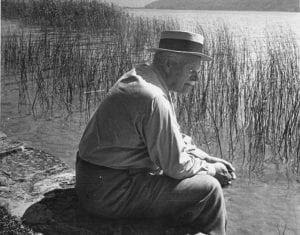It seems to me probable that the real nature of the archetype is not capable of being made conscious, that it is transcendent, on which account I call it psychoid. ~Carl Jung, CW 8, para. 417.
If so, the position of the archetype would be located beyond the psychic sphere, analogous to the position of physiological instinct, which is immediately rooted in the stuff of the organism and, with its psychoid nature, forms the bridge to matter in general. ~Carl Jung, CW 8, Para 420.
The archetype itself (nota bene not the archetypal representation!) is psychoid,i.e., transcendental and thus relatively beyond the categories of number, space, and time. That means, it approximates to oneness and immutability. ~Carl Jung, Letters Vol. II, Pages 317-319.
The assumption, therefore, that the (psychoid) archetypes are inherited is for many reasons far more probable than that they are handed down by tradition. ~Carl Jung, Letters Vol. II, Pages 450-451
It seems to me probable that the real nature of the archetype is not capable of being made conscious, that it is transcendent, on which account I call it psychoid. ~Carl Jung, CW 8, Para 417
Like all archetypal symbols, the symbol of the tree has undergone a development of meaning in the course of the centuries. It is far removed from the original meaning of the shamanistic tree, even though certain basic features prove to be unalterable. The psychoid form underlying any archetypal image retains its character at all stages of development, though empirically it is capable of endless variations. The outward form of the tree may change in the course of time, but the richness and vitality of a symbol are expressed more in its change of meaning. ~Carl Jung, CW13, ¶ 350
This plant is an inner, spiritual growth, the development of a tree of life and knowledge which played a great role in alchemy....In general it is advisable to watch these inner developments and not let them slip back into the unconscious, lest they get stuck in the physiological sphere, or rather in the realm of the [psychoid] unconscious which merges with the body, where they give rise to pathological formations which a wise man carefully avoids. (Jung, Letters Vol. II, Pages 607-608)
The archetypal representations (images and ideas) mediated to us by the unconscious should not be confused with the archetype as such. They are very varied structures which all point back to one essentially "irrepresentable" basic form. The latter is characterized by certain formal elements and by certain fundamental meanings, although these can be grasped only approximately. The archetype as such is a psychoid factor that belongs, as it were, to the invisible, ultra-violet end of the psychic spectrum ... It seems to me probable that the real nature of the archetype is not capable of being made conscious, that it is transcendent, on which account I call it psychoid [quasi-psychic]. ~Carl Jung, CW 8, Para 417
Just as a man has a body which is no different in principle from that of an animal, so also his psychology has a whole series of lower storeys in which the spectres from humanity's past epochs still dwell, when the animal souls from the age of Pithecanthropus and the hominids, then the "psyche" of the cold-blooded saurians, and, deepest down of all, the transcendental mystery and paradox of the sympathetic and parasympathetic psychoid systems. ~Carl Jung, CW 14, Para 279


No comments:
Post a Comment